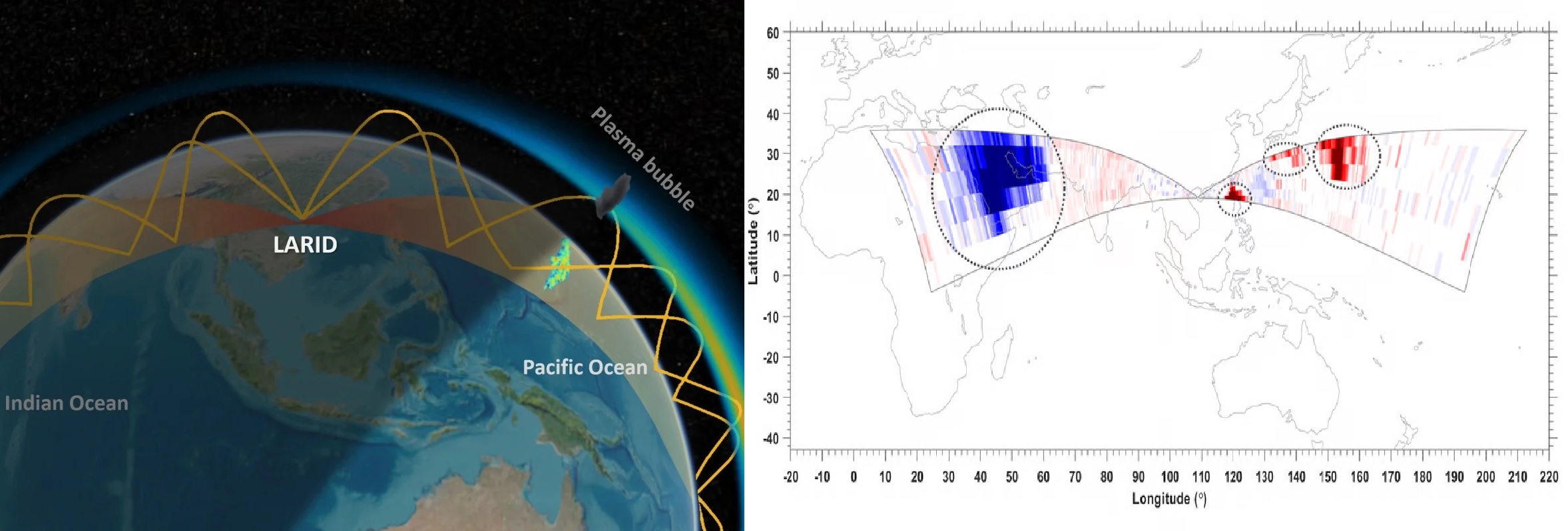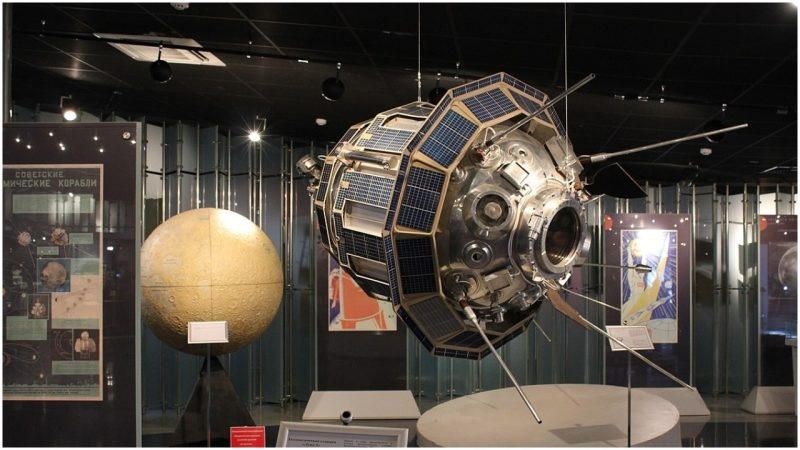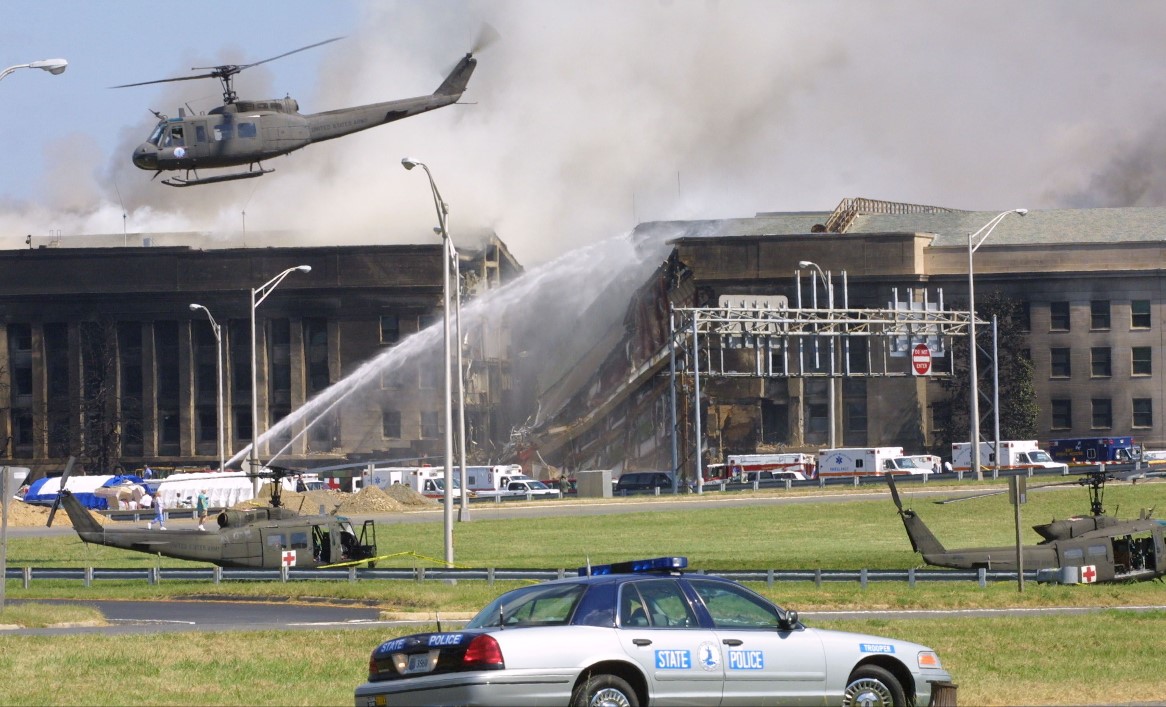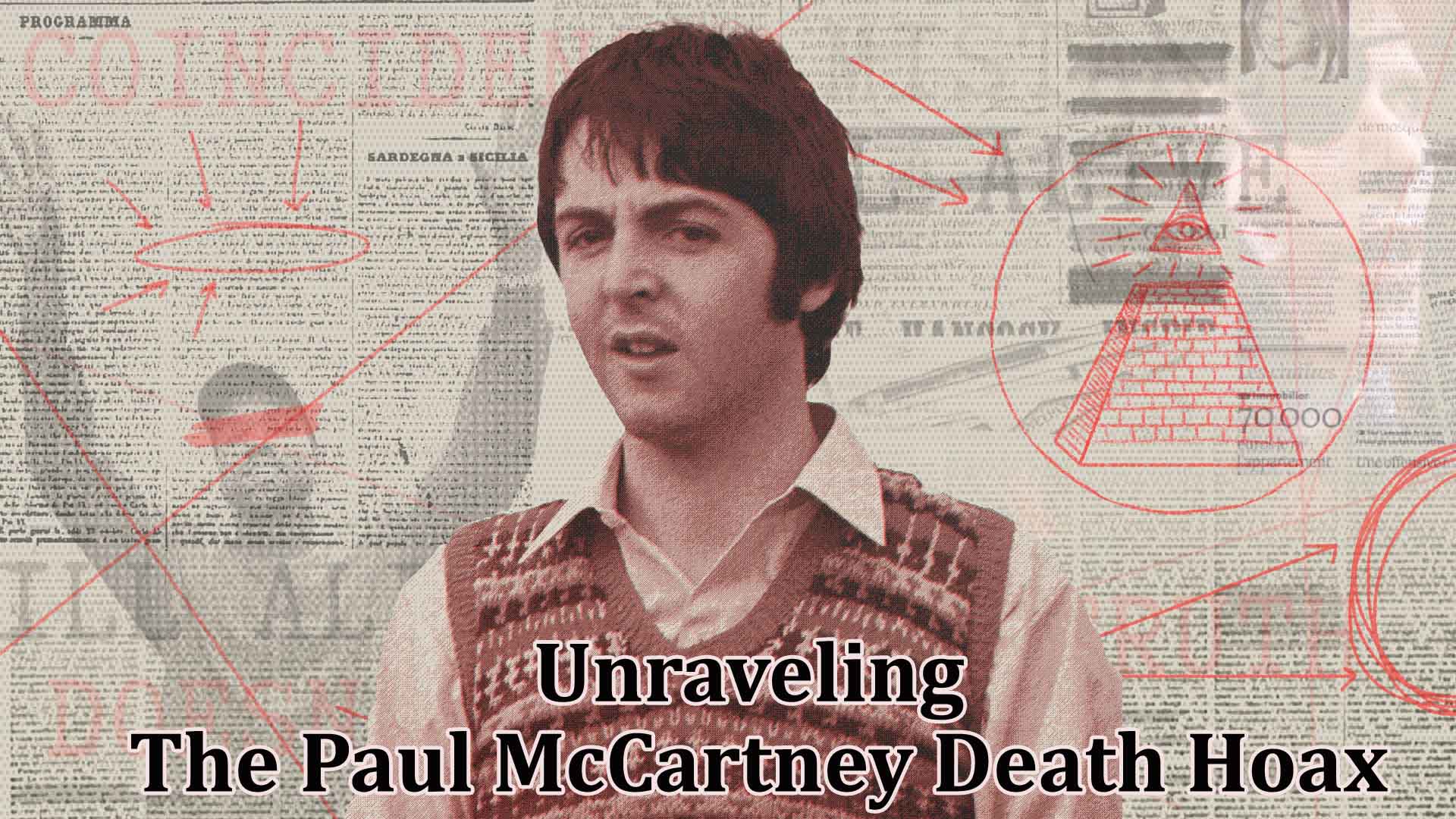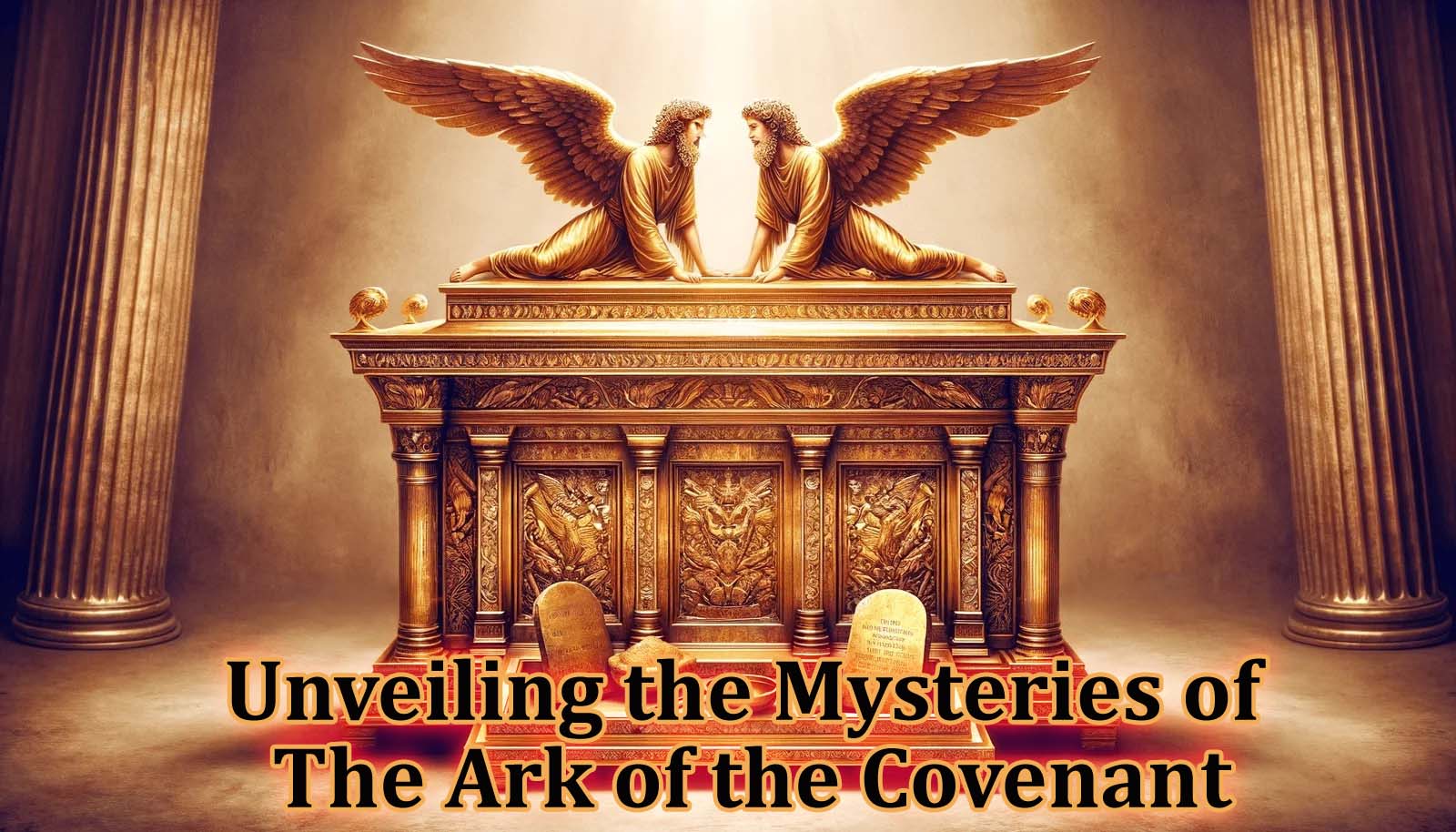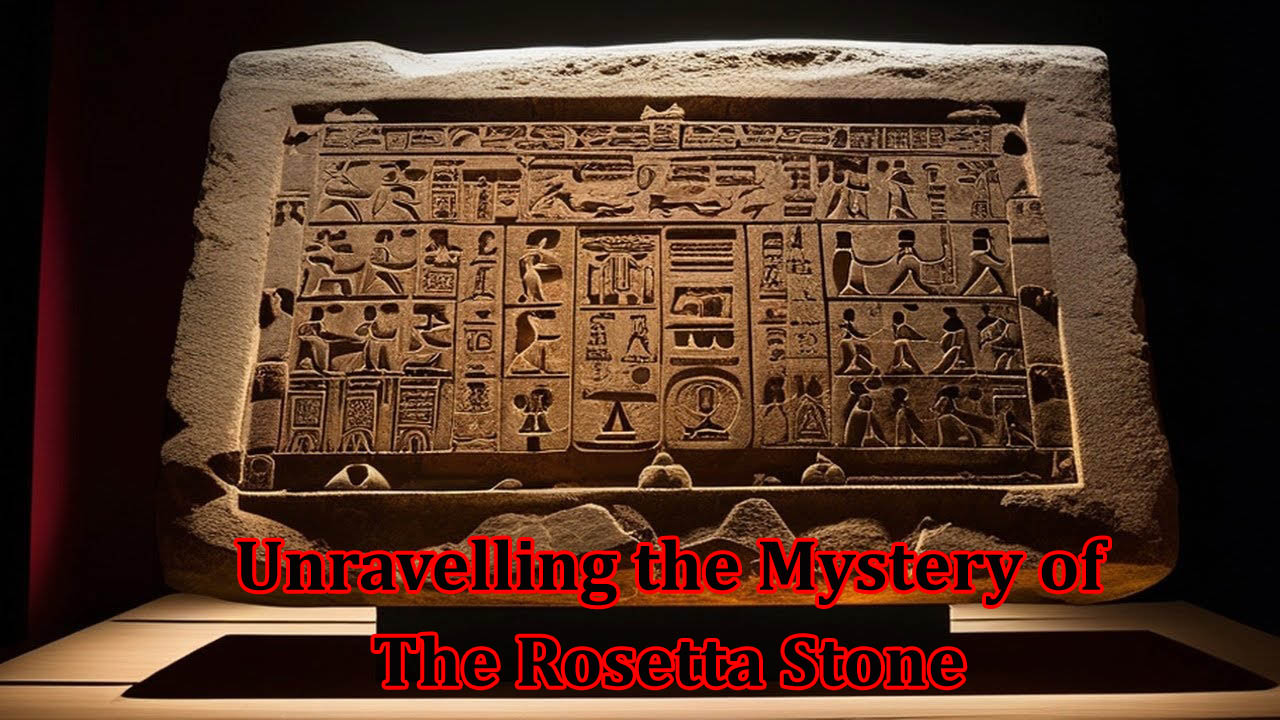Secrets/Mystery
On the evening of March 24, 2025, a captivating blue spiral appeared in the night sky over Europe, leaving residents from the United Kingdom to Poland in awe and curiosity. This mesmerizing display prompted widespread speculation, with theories ranging from aircraft and satellites to galaxies and even extraterrestrial activity. The Cause: SpaceX Falcon 9 Rocket Launch The true origin of this celestial spectacle was traced back to a terrestrial source: a SpaceX Falcon 9 rocket. Launched earlier that day from Cape Canaveral Space Force Station in Florida, the rocket was on a classified mission for the National Reconnaissance Office (NRO). Approximately an hour after liftoff, as the rocket's second stage passed over Europe, it released excess fuel into the upper atmosphere. This fuel, upon contact with the cold environment, froze and formed a cloud of ice particles. The subsequent interaction of sunlight with these particles resulted in the luminous blue spiral observed across the continent. Understanding the Spiral Formation Such spirals, though rare, are not unprecedented. They occur when rockets perform fuel dumps at high altitudes. The expelled fuel, freezing upon release, creates a reflective cloud that, when illuminated by sunlight, manifests as a glowing spiral. The rotation of the rocket or the dynamics of the fuel release can impart a spiral shape to the expanding cloud. Similar phenomena have been documented in the past, often linked to missile tests or space launches. Public Reaction and Expert Clarification The unexpected appearance of the spiral led to a flurry of activity on social media platforms, with users sharing images and videos, and engaging in discussions about its possible origins. While some entertained the notion of alien involvement, experts swiftly provided explanations grounded in atmospheric and aerospace science. The UK's Met Office, among other institutions, attributed the display to the SpaceX launch, elucidating the process of fuel release and the resulting optical effects. Conclusion The blue spiral that graced European skies serves as a testament to the intricate interplay between human technological endeavors and natural atmospheric phenomena. While initially enigmatic, the event underscores the importance of scientific inquiry in demystifying occurrences that, at first glance, may seem beyond earthly explanation.
Read More → Posted on 2025-03-25 15:43:47Secrets/Mystery
A team of archaeologists has made a groundbreaking discovery in Egypt’s Anubis Mountain necropolis—a royal tomb dating back 3,600 years. This tomb could provide the strongest evidence yet of the elusive Abydos Dynasty, a little-known ruling lineage of Upper Egypt that existed between 1700 B.C. and 1600 B.C. For years, scholars have debated whether the Abydos Dynasty was real or just a fragmented part of Egyptian history. But the newly uncovered burial site, announced by Egypt’s Ministry of Tourism and Antiquities, might finally validate its existence. A Hidden Tomb Deep Beneath the Sand Led by researchers from the University of Pennsylvania, the excavation revealed a massive underground burial chamber, approximately 7 meters (23 feet) below the surface. Constructed from limestone and mud bricks, the tomb features vaults and a towering 5-meter (16.5-foot) high chamber, unlike anything seen before from this era. At the tomb’s entrance, golden bands of hieroglyphs were discovered, possibly revealing the name of the buried pharaoh. Though his identity remains unknown, the presence of inscriptions dedicated to the goddesses Isis and Nephthys—both associated with mourning and the afterlife—suggests a royal connection. A Connection to King Senebkay? According to Mohamed Abdel Badie, head of the Egyptian Antiquities Sector, the newly found tomb is significantly larger than other known Abydos Dynasty tombs. This suggests that the buried pharaoh might have been a predecessor of King Senebkay, who ruled sometime between 1650 B.C. and 1600 B.C. Joseph Wagner, the head of the excavation mission, pointed out striking similarities between the architectural style of this tomb and that of Senebkay’s, which was discovered in 2014. If further evidence confirms a link between the two, this discovery could rewrite Egypt’s Second Intermediate Period history. The Legacy of Mount Anubis Necropolis The tomb lies within the Anubis Mountain necropolis, one of Egypt’s most significant burial sites. This location also houses the tomb of King Senusret III (1874 B.C.-1855 B.C.), a powerful pharaoh of the Middle Kingdom. His choice to build a grand tomb in the pyramid-shaped summit of Mount Anubis likely set a precedent for future rulers to be buried there. More Discoveries Await In an unexpected twist, another excavation in the area recently uncovered a Roman-era pottery workshop. Researchers found several burials at the site, including a mummified child wearing a colorful hat and the skull of a 30-year-old woman. Wheat roots and seeds from ancient plants were also discovered, shedding light on life and traditions during that time. Egypt’s Minister of Tourism and Antiquities, Sherif Fathy, emphasized that both discoveries—the royal tomb and the pottery workshop—will help boost tourism and offer deeper insights into Egypt’s rich and complex history. Secretary-General of the Supreme Council of Antiquities, Mohamed Ismail Khaled, added that the findings provide crucial context to the political landscape of the Second Intermediate Period. Though much remains to be studied, this hidden tomb has opened a new chapter in the search for Egypt’s lost kings. Further research will determine its exact date and uncover more details about the mysterious pharaoh who once ruled from the shadows of history.
Read More → Posted on 2025-03-22 15:35:58Secrets/Mystery
In early 2020, a mysterious tragedy struck Botswana’s Okavango Delta: over 300 African elephants died in one of the largest and most perplexing wildlife mortality events in recent history. The unexplained deaths, dubbed a "conservation disaster," left researchers scrambling for answers. Now, satellite imagery and a fresh analysis of environmental data have revealed a likely cause — cyanobacterial toxins fueled by extreme climate shifts. A Mystery Unfolds The scene in the Okavango Delta was grim: elephant carcasses scattered near waterholes, many collapsed face-first as if in a final act of desperation. Early theories ranged from poaching to infectious diseases, but intact tusks ruled out human interference. Despite the urgency, pandemic-era restrictions and the remote location delayed field investigations, limiting the collection of vital water and tissue samples. Years later, scientists have used satellite observations and aerial surveys to piece together the environmental puzzle. Their findings highlight the deadly role of cyanobacteria, microscopic blue-green algae that can produce neurotoxins harmful to both animals and humans. By analyzing over a decade of satellite data, researchers uncovered evidence of an ecological cascade driven by climate extremes, leading to the proliferation of toxic algae in waterholes. Climate Whiplash and Deadly Algae Blooms The Okavango Delta experienced an unprecedented climatic shift in the years leading up to the event. A severe drought in 2019 left many waterholes completely dry. Then, unusually heavy rains in early 2020 delivered a dramatic influx of water, stirring up nutrient-rich sediments. This created ideal conditions for cyanobacteria to bloom at record levels. Satellite imagery revealed that algae growth peaked between March and May 2020, coinciding with rising temperatures and stagnant waters — conditions that enhance toxin production. Elephants, being large animals requiring significant daily water intake, were particularly vulnerable. Unlike smaller animals that sip cautiously from the edges, elephants often wade into waterholes, increasing their exposure to concentrated toxins. The study estimates that affected elephants traveled up to 16.5 kilometers (10.25 miles) and succumbed to the toxins within 88 hours, exhibiting symptoms consistent with cyanotoxin poisoning. A Warning for the Future This tragic event underscores the broader impacts of climate change on Africa's ecosystems. As temperatures rise and rainfall patterns grow more erratic, the conditions that foster harmful algal blooms are becoming more common. Scientists warn that similar events could occur with greater frequency, threatening not only elephants but entire ecosystems reliant on freshwater sources. Botswana, home to roughly one-third of Africa’s remaining elephants, faces unique conservation challenges. The Okavango Delta, a UNESCO World Heritage Site, is not only a sanctuary for wildlife but also a critical water resource for the region. Researchers emphasize the urgent need for improved water quality monitoring and proactive conservation strategies to mitigate the risks of future mass die-offs. The Role of Technology The study marks a significant step forward in the use of satellite technology for wildlife conservation. By leveraging decades of environmental data, scientists were able to uncover patterns that would have been impossible to observe from the ground. While cyanotoxins themselves remain undetectable via satellite, the ability to monitor algal blooms and climatic changes provides a powerful tool for predicting and preventing similar events in the future. As Niall McCann of the U.K.’s National Park Rescue noted, the findings highlight the interconnectedness of climate, wildlife health, and human activity. They serve as a stark reminder that the ripple effects of climate change extend far beyond visible disasters, manifesting in subtle yet devastating ways across the natural world. Looking Ahead The 2020 elephant deaths are a sobering example of how climate change exacerbates existing ecological vulnerabilities. Without intervention, such events may become a recurring feature of Africa’s conservation landscape. The study underscores an urgent need for international cooperation, advanced monitoring technologies, and adaptive management strategies to protect the continent's iconic species and the ecosystems they inhabit.
Read More → Posted on 2024-12-05 16:36:34Secrets/Mystery
Today, the U.S. Congress is preparing for yet another public hearing on Unidentified Anomalous Phenomena (UAPs), a term that’s come to replace the more familiar “UFOs.” This shift in language reflects a growing recognition that these mysterious sightings don’t just happen in the skies but can also appear in space, underwater, and across various realms. This hearing, organized by the U.S. House of Representatives Committee on Oversight and Accountability, is set to bring further attention to the hidden files and secrecy surrounding UAP research conducted by the U.S. government.The event, titled "Unidentified Anomalous Phenomena: Exposing the Truth," will begin at 11:30 a.m. ET (1630 GMT) in the Rayburn House Office Building in Washington, D.C. For those who can't be there in person, a live stream will be available courtesy of the Committee on Oversight and Accountability.This is the second time Congress has held such a hearing to “pull back the curtain” on UAP research, challenging the Department of Defense’s restrictive classification policies on the topic. Nancy Mace (R-S.C.) and Glenn Grothman (R-Wis.), leading the hearing, argue that Americans deserve to know what the government knows about these unexplained sightings. As stated by the House Committee, the goal is to provide transparency and help the public understand the potential security implications of UAPs.One of the most anticipated speakers today is Luis Elizondo, a former U.S. counterintelligence officer and well-known UAP whistleblower. Elizondo has long claimed that the U.S. government is concealing vital information about UAPs, including recovered materials from suspected alien crafts. In his 2024 book Imminent, Elizondo alleged the existence of “nonhuman bodies” recovered from the famous Roswell crash in 1947. He also contends that other nations, notably China and Russia, have taken UAPs seriously enough to involve their scientific communities in related research without the stigma seen in the United States.Another speaker, Tim Gallaudet, a retired U.S. Navy Rear Admiral, will bring a different perspective to the hearing. Gallaudet’s focus will be on unidentified submersible objects, which he believes pose potential security risks in U.S. waters. His testimony is expected to delve into how these underwater anomalies may affect maritime operations and could represent an additional front for the U.S. to monitor.Michael Shellenberger, an investigative journalist, will also testify, likely reinforcing the claims that secret government programs have hidden UFO crash retrievals and other evidence of alien encounters from the public eye. NASA’s former Associate Administrator of Space Policy, Michael Gold, will round out the panel, representing NASA’s independent UAP study team. The study, released in September 2024, reported that while no evidence of extraterrestrial origin for UAPs was found, there’s still a significant amount that remains unexplained. NASA Administrator Bill Nelson, in discussing the findings, remarked that understanding UAPs is a complex issue that demands deeper inquiry.This new hearing is an important moment for U.S. transparency on UAPs. It’s also a rare opportunity to hear directly from high-ranking experts who have investigated these phenomena, providing a valuable chance for the public to learn about an area that has remained mostly hidden from view. Whether this hearing will finally reveal definitive answers, or simply raise more questions, is anyone's guess—but it will certainly keep the public, and scientists, intrigued. As curiosity grows, so too does the demand for the truth. For now, though, the American people will have to tune in to find out what their government might know about what’s really out there.Hearing Video Link :- Click Here
Read More → Posted on 2024-11-13 15:33:49Secrets/Mystery
In a groundbreaking discovery, Chinese scientists using the world’s most powerful ionospheric radar have detected equatorial plasma bubbles appearing over Egypt’s iconic pyramids in Giza, as well as the remote Midway Islands in the Pacific, at almost the same time. This unusual phenomenon, captured by China’s Low Latitude Long Range Ionospheric Radar (LARID), marks a significant leap in our understanding of the Earth's upper atmosphere and its effects on communication systems.Plasma bubbles, a mysterious weather phenomenon occurring in low-latitude regions, are caused by the sudden depletion of charged particles in the ionosphere. These bubbles can wreak havoc on modern technology, particularly GPS systems and satellite communications, with the potential to disrupt signals for hundreds of kilometers. What makes these bubbles even more intriguing is their ability to grow to enormous sizes—hundreds of kilometers in diameter—making their detection crucial for future communication and defense technologies.China's LARID, constructed on Hainan Island in 2022, has now made it possible to detect these plasma bubbles from astonishing distances of up to 9,600 kilometers (nearly 6,000 miles). This radar has brought unprecedented clarity to the observation of these elusive formations. For the first time, on November 4-6 last year, plasma bubbles triggered by a solar storm were clearly tracked by the radar, reaching as far as North Africa and the central Pacific, with the pyramid region of Egypt being one of the detection sites.The radar's sophisticated technology, operating between 8-22 MHz and featuring 48 transceiver antennas split between two subsystems, allows it to bounce high-powered electromagnetic waves between the ionosphere and the Earth’s surface. When these waves hit plasma bubbles, part of the signal is reflected back, making it possible for scientists to monitor the size, movement, and impact of the bubbles in real-time.Although similar radar systems exist, China's LARID is the first of its kind capable of monitoring plasma bubbles on such a large scale. It represents a technological leap, especially considering the challenges posed by Earth’s curvature, which makes it difficult for conventional radars to observe targets beyond the horizon. By applying cutting-edge signal coding and geophysical simulation models, Chinese researchers were able to improve LARID's detection range from an initial 3,000 kilometers to over 9,600 kilometers within just six months.The ramifications of this discovery go beyond simple atmospheric science. Plasma bubbles can severely affect satellite communications, which are critical for both civilian and military applications. In fact, these bubbles have long been a subject of interest for global military forces, including the U.S. Navy, due to their potential to disrupt modern warfare communication systems. By further refining the capabilities of LARID and possibly constructing additional radars in other low-latitude regions, China aims to achieve seamless, real-time monitoring of plasma bubbles across the globe.Although the radar itself is designed for scientific observation and cannot detect military targets like aircraft, similar over-the-horizon radar technology has already been adopted by China’s military. These radars are reportedly capable of detecting stealth aircraft such as the U.S. F-22 fighter jet, thanks to the long wavelengths emitted by the radar, which stealth coatings on aircraft have difficulty absorbing.This cutting-edge research and the super-radar network that China is proposing could reshape our understanding of equatorial plasma bubbles and their wide-reaching impact on modern communication systems. It also underscores China's growing prowess in space and atmospheric research, positioning the country as a key player in global scientific advancements. With the potential for further discoveries and even more advanced radar technology on the horizon, China’s efforts in this field are set to push the boundaries of what’s possible in both atmospheric research and strategic defense.
Read More → Posted on 2024-09-07 15:14:30Secrets/Mystery
The late 1950s and 1960s were defined by the intense space race between the United States and the Soviet Union, a competition that was as much about technological prowess as it was about political dominance. President John F. Kennedy's bold proclamation to put a man on the moon amplified NASA's efforts, while the Soviet Union sought to showcase its own capabilities. Relations between these superpowers were strained, and both nations were eager to demonstrate their superiority.In September 1959, the Soviet Union made a significant leap by crashing their Luna 2 probe into the moon, marking the first human-made object to reach the lunar surface. This achievement was more than a scientific milestone; it was a powerful political statement, with the Soviet coat of arms symbolically planted on the moon. But the U.S. wasn't just watching from the sidelines. In a clandestine operation that seemed straight out of a spy novel, the CIA orchestrated a bold heist to gather intelligence on Soviet space technology.The story begins with a Soviet exhibition tour that included an actual Lunik 2, the type of spacecraft that had successfully reached the moon. The Soviets intended to flaunt their technological triumphs, but this display also provided a rare opportunity for U.S. intelligence. A CIA team managed to gain access to the Lunik exhibit for 24 hours, during which they meticulously disassembled the probe, photographed every component, and then reassembled it—all without leaving a trace.This covert operation was not just about the mechanics of taking apart and putting back together a spacecraft; it was a high-stakes gamble that required precision and nerves of steel. The team worked through the night, capturing detailed images of the internal layout, including fuel tanks and electrical systems. Every aspect of the Lunik was documented, giving U.S. scientists and engineers invaluable insights into Soviet space technology.Years later, the details of this operation were declassified and revealed in a sanitized CIA historical review. The review, written by CIA officer Sydney W. "Wes" Finer and published in the agency's 1967 edition of "Studies in Intelligence," painted a vivid picture of the mission. It was space historian Dwayne Day who first brought this mission to public attention in the mid-1990s, after discovering the declassified document at the National Archives.In 2020, John Greenewald, founder of the Black Vault, published a non-sanitized version of the document, shedding more light on the operation. This version detailed how factory markings and other identifiers were used to trace the origins and components of the Lunik. The intelligence gathered provided a clear picture of Soviet production methods and capabilities, highlighting the fifth Lunik stage and identifying key electrical component suppliers.The operation wasn't without its challenges and moments of humor. Reassembling the probe was like a high-stakes game of Humpty Dumpty, with team members struggling to fit the pieces back together in the cramped confines of the spacecraft. One document vividly describes the painstaking efforts to resecure the orb in its basket, a task that took nearly an hour and tested the patience and skills of the operatives.In the end, the mission was deemed a success, exemplifying the fine line between covert operations and overt intelligence collection. The CIA's "kidnapping" of the Lunik probe was a testament to their ingenuity and determination to outmaneuver the Soviet Union in the space race. It was a daring exploit that, for many years, remained one of the most extraordinary episodes of Cold War espionage.
Read More → Posted on 2024-07-21 15:27:31Secrets/Mystery
A Harvard University study suggests that alien beings might be living covertly among us, raising intriguing questions about the existence and integration of extraterrestrial life forms on Earth.A recent study from Harvard University proposes a bold new idea: alien beings could be living covertly alongside humans on Earth. This study, originating from Harvard's Human Flourishing Program, delves into the concept of "cryptoterrestrial" beings. These entities, often linked to unidentified aerial phenomena (UAP) or UFOs, might be concealed underground, on the moon, or even integrated into human society.The study categorizes these cryptoterrestrials into four distinct groups:1. Human Cryptoterrestrials: These are believed to be descendants of an ancient human civilization that once flourished but now exists in a reduced state.2. Hominid or Theropod Cryptoterrestrials: These could be non-human civilizations evolved from terrestrial animals, skilled in stealth and concealment.3. Former Extraterrestrial or Extratempestrial Cryptoterrestrials: These beings might originate from outside Earth or from the distant future and have assimilated into our environment.4. Magical Cryptoterrestrials: These entities have mystical attributes, similar to folklore creatures like fairies or nymphs, and interact with the human world in non-technological ways.The researchers acknowledge that their ideas might be met with skepticism within the scientific community. However, they call for an open-minded consideration of their findings. Notably, the paper is awaiting peer review to validate its claims.This study comes amid ongoing public intrigue and debate about the existence of extraterrestrial life. Recent reports have suggested that the US government might be concealing information about large unidentified flying objects (UFOs), further fueling the mystery.For decades, scientists have been investigating the possibility of alien life forms, but definitive answers have remained elusive. This new study from Harvard University adds a fresh perspective to the ongoing quest for understanding whether we are truly alone in the universe.As scientific exploration continues, the fascination with extraterrestrial life and the potential for hidden alien beings on Earth remains a compelling and unresolved mystery.
Read More → Posted on 2024-06-15 15:57:59Secrets/Mystery
Secret News U.SThe events of September 11, 2001, left an indelible mark on history, reshaping global geopolitics, security measures, and societal norms. Amidst the chaos and devastation of the 9/11 attacks, a multitude of conspiracy theories emerged, challenging the official narrative and prompting alternative interpretations of the events. One such theory posits that the Pentagon was not struck by American Airlines Flight 77, as officially reported, but by a missile. In this comprehensive report, we will delve into the origins, claims, evidence, controversies, and implications surrounding the 9/11 Pentagon Missile theory. Origins of the 9/11 Pentagon Missile Theory The 9/11 Pentagon Missile theory emerged in the aftermath of the terrorist attacks as individuals sought to make sense of the unprecedented tragedy. Questions surrounding the flight path of Flight 77, the absence of clear footage capturing the impact, and discrepancies in the debris field and damage pattern at the Pentagon site fueled skepticism and suspicion. As the official narrative of events came under scrutiny, alternative explanations, including the missile theory, gained traction among skeptics and conspiracy theorists. Key Claims of the 9/11 Pentagon Missile TheoryCentral to the 9/11 Pentagon Missile theory are several key claims that diverge from the official account of the Pentagon attack:Absence of Aircraft Debris: Proponents of the missile theory point to the purported lack of visible aircraft debris at the Pentagon crash site immediately following the impact. They argue that the absence of recognizable plane wreckage, such as wings, fuselage, and engines, suggests that a missile, rather than a commercial airliner, struck the building.Damage Inconsistencies: Skeptics of the official narrative highlight inconsistencies in the damage pattern observed at the Pentagon site. They contend that the size and shape of the impact hole, as well as the trajectory of the alleged aircraft, do not align with expectations based on the dimensions and flight path of a Boeing 757. Instead, they propose that the observed damage is more consistent with a missile strike.Eyewitness Testimonies: Anecdotal accounts from eyewitnesses who claimed to have observed a fast-moving, low-flying object approaching the Pentagon prior to the explosion are often cited as supporting evidence for the missile theory. These testimonies, while subjective and varied in their descriptions, contribute to the overall narrative of an alternative explanation for the Pentagon attack. Purported Evidence and Anecdotal AccountsSupporters of the 9/11 Pentagon Missile theory cite a range of evidence and testimonies to bolster their claims:Photographic and Video Analysis: Analysis of photographs and video footage captured in the immediate aftermath of the Pentagon attack is scrutinized for signs of a missile strike. Proponents of the missile theory point to anomalies such as the absence of visible aircraft wreckage, the size and shape of the impact hole, and the trajectory of the alleged projectile as evidence supporting their interpretation of events.Eyewitness Testimonies: Accounts from individuals who claimed to have witnessed a missile or unidentified flying object (UFO) approaching the Pentagon prior to the explosion are often cited as corroborating evidence. These eyewitness testimonies, while subject to interpretation and scrutiny, contribute to the overall narrative of an alternative explanation for the Pentagon attack.Analysis of Government Documents: Some proponents of the missile theory reference government documents, declassified intelligence reports, and investigative findings to support their claims. References to classified military technologies, defense systems, and historical precedents of false flag operations are invoked to contextualize the alleged motive and means behind the purported missile strike. Critiques and Debunking of the 9/11 Pentagon Missile TheoryDespite its persistence, the 9/11 Pentagon Missile theory has been met with skepticism and criticism from skeptics, experts, and fact-checkers:Forensic Analysis and Reconstruction: Forensic analysis of the Pentagon crash site, including the examination of debris, impact patterns, and structural damage, supports the conclusion that a commercial airliner, rather than a missile, struck the building. Reconstruction of the flight path and trajectory of Flight 77 corroborates the official account of events, dismissing claims of a missile strike.Eyewitness Perception and Interpretation: Eyewitness testimonies of a fast-moving object approaching the Pentagon are subject to interpretation and cognitive biases, such as hindsight bias and suggestibility. Factors such as shock, confusion, and the chaotic nature of the event may have influenced perceptions and recollections, leading to discrepancies in accounts of what was observed.Occam's Razor and Plausibility: From a rational standpoint, the 9/11 Pentagon Missile theory violates the principle of Occam's razor, which favors simpler, more parsimonious explanations over complex and convoluted hypotheses. The idea of a clandestine missile strike orchestrated as part of a false flag operation requires extraordinary evidence to be taken seriously, lacking empirical support and feasibility. Implications and RamificationsThe persistence of the 9/11 Pentagon Missile theory underscores the enduring appeal of conspiracy narratives in shaping public discourse and perceptions of historical events. While skeptics and experts have refuted the claims of a missile strike, the conspiracy theory continues to resonate with individuals skeptical of official narratives and distrustful of government institutions. The proliferation of alternative explanations for the Pentagon attack underscores the importance of critical thinking, evidence-based analysis, and skepticism in navigating complex and contentious historical events. Editor’s Thoughts: Navigating Truth Amidst Conspiracy In conclusion, the 9/11 Pentagon Missile theory represents a prominent example of conspiracy thinking surrounding one of the most pivotal events in modern history. While lacking empirical evidence and scientific credibility, the theory persists as a testament to the enduring allure of alternative explanations and distrust in official narratives. By critically examining the origins, claims, evidence, critiques, and implications of the 9/11 Pentagon Missile theory, we gain insight into the complexities of conspiracy culture and the challenges of discerning truth amidst the fog of misinformation and speculation.
Read More → Posted on 2024-04-19 16:22:43Secrets/Mystery
Mystery News DubaiOn April 16th, 2024, social media erupted with a captivating sight: videos showcasing Dubai's usually clear sky morphing into an eerie green. This dramatic transformation, amidst heavy rain and storms, sparked a wave of curiosity and concern. What caused this celestial phenomenon, and what implications might it hold for the future? The Science of the Emerald HueThe culprit behind the green spectacle lies in the interplay of light, water, and ice particles within storm clouds. Sunlight is a spectrum of colors, with blue wavelengths scattering more readily in the atmosphere. When a storm cloud holds a significant amount of water vapor and ice, it becomes thick and dense. This density allows the cloud to preferentially scatter the blue light, leaving the remaining sunlight dominated by red and yellow wavelengths.However, the story doesn't end there. As the red and yellow sunlight filters through the ice and water droplets within the cloud, a fascinating phenomenon occurs. These water droplets act like tiny prisms, splitting the light further. The red and yellow light interact with the water molecules, causing a slight shift in wavelength towards green. This scattered green light then reaches our eyes, painting the underside of the storm cloud with its ethereal emerald glow.Green Skies: A Sign of Things to Come ?While the green sky in Dubai was undeniably captivating, some worried it might be a harbinger of more extreme weather events. While the green hue itself isn't necessarily a cause for alarm, the conditions that create it – thick storm clouds with significant hail and rain – are often associated with severe weather. However, directly linking the green sky to future weather patterns is challenging. Scientists believe climate change may be influencing weather systems, potentially leading to more intense storms. However, more research is needed to establish a definitive connection between climate change and the frequency or severity of green sky events.Future Outlook: Understanding and AdaptingThe green sky serves as a powerful reminder of the dynamic nature of our planet's atmosphere. While the immediate cause is well-understood, the long-term implications require ongoing scientific exploration. Climate change models will need to incorporate these types of phenomena to provide more accurate predictions of future weather patterns.For Dubai and other regions prone to intense storms, the green sky episode highlights the importance of preparedness. Early warning systems, robust infrastructure, and public education can all play a crucial role in mitigating the impact of severe weather events, regardless of their visual spectacle.The green sky over Dubai may have been a fleeting phenomenon, but it serves as a valuable reminder of the delicate balance of our planet's systems. By understanding the science behind such events and continuing to monitor our ever-changing climate, we can better prepare for the future and ensure a more sustainable world.
Read More → Posted on 2024-04-18 17:23:43Secrets/Mystery
Mystery News World The Paul McCartney Death Hoax is a legendary conspiracy theory that has captivated the imaginations of fans and skeptics alike for decades. Stemming from rumors that began circulating in the late 1960s, the theory suggests that Paul McCartney, legendary musician and member of The Beatles, died in 1966 and was secretly replaced by a lookalike. In this extensive report, we will delve into the origins, claims, evidence, cultural impact, and enduring legacy of the Paul McCartney Death Hoax. Origins of the Paul McCartney Death HoaxThe origins of the Paul McCartney Death Hoax can be traced back to September 1969, when rumours of McCartney's alleged demise began to spread among fans of The Beatles. The speculation gained traction after a series of clues and cryptic messages were purportedly discovered in the band's music and album artwork, fuelling speculation about McCartney's fate. As word of the conspiracy spread, fans embarked on a quest to unravel the truth behind the mysterious rumours, giving rise to one of the most enduring myths in popular culture. Key Claims of the Paul McCartney Death HoaxCentral to the Paul McCartney Death Hoax are several key claims that form the foundation of the conspiracy narrative:McCartney's Alleged Demise: Proponents of the hoax contend that Paul McCartney died in a car accident or other tragic event in 1966, leading to the need for a replacement to preserve The Beatles' image and legacy. References to purported newspaper articles, radio broadcasts, and eyewitness testimonies are often cited as evidence supporting this claim, despite lacking verifiable sources or corroboration."Clues" in Music and Album Artwork: Supporters of the hoax point to a series of alleged clues and hidden messages embedded in The Beatles' music and album covers, suggesting foreknowledge of McCartney's death and subsequent replacement. References to specific song lyrics, album titles, and visual imagery are interpreted as cryptic hints and symbolic references to the supposed conspiracy, although mainstream scholars dismiss these interpretations as coincidence or misinterpretation.Visual Discrepancies and Changes in Appearance: Skeptics of the official narrative point to perceived discrepancies in McCartney's appearance and demeanor before and after the alleged date of his death. Changes in facial features, height, and musical style are attributed to the presence of a "Faul" (Fake Paul) impostor masquerading as the real McCartney, although scientific analysis and biographical evidence contradict these claims. Purported Evidence and Anecdotal AccountsSupporters of the Paul McCartney Death Hoax cite a variety of evidence and anecdotes to bolster their claims: Analysis of Album Covers and Lyrics: Close examination of album artwork, song lyrics, and promotional materials from The Beatles' discography reveals purported references to death, rebirth, and the alleged replacement of McCartney. Symbolic imagery, cryptic messages, and visual anomalies are interpreted as evidence of a deliberate attempt to convey hidden meanings to attentive listeners and fans.Eyewitness Testimonies and Insider Accounts: Anecdotal accounts from individuals claiming to have insider knowledge or personal connections to The Beatles corroborate the existence of a conspiracy to conceal McCartney's death and replace him with a doppelganger. References to studio insiders, industry executives, and close associates of the band suggest a clandestine operation orchestrated to maintain the illusion of McCartney's continued presence in the group.Comparison of Vocal and Musical Style: Some proponents of the hoax argue that discernible differences in McCartney's vocal delivery, songwriting style, and musical preferences before and after 1966 provide further evidence of a switcheroo. Alleged discrepancies in artistic expression, creative output, and public persona are cited as indicators of an imposter attempting to emulate McCartney's distinctive traits and mannerisms. Critiques and Debunking of the Paul McCartney Death HoaxDespite its enduring popularity, the Paul McCartney Death Hoax has been met with skepticism and criticism from skeptics, scholars, and biographers:Lack of Concrete Evidence: Critics of the hoax argue that the evidence supporting McCartney's alleged demise and replacement is largely circumstantial and speculative, lacking verifiable sources or empirical support. Allegations of newspaper articles, radio broadcasts, and eyewitness testimonies remain unsubstantiated, relying on hearsay and conjecture rather than factual documentation.Coincidence and Misinterpretation: Many of the alleged clues and cryptic messages attributed to The Beatles' music and album artwork are dismissed as coincidence or misinterpretation. The human tendency to perceive patterns and meanings in random stimuli, known as pareidolia, may explain the emergence of supposed clues and hidden meanings where none exist, leading to false conclusions and erroneous interpretations.Biographical Continuity and Consistency: Biographical evidence and historical records corroborate the continuity and consistency of McCartney's life and career before and after the alleged date of his death. Detailed timelines, interviews, and archival materials document McCartney's ongoing presence in The Beatles and subsequent solo endeavors, refuting claims of a secret replacement or impostor masquerading as the real McCartney. Cultural Impact and Enduring LegacyThe Paul McCartney Death Hoax has had a profound impact on popular culture, influencing music, literature, film, and media discourse:Legacy of Conspiracy Culture: The enduring popularity of the Paul McCartney Death Hoax reflects broader trends in conspiracy culture, where skepticism towards official narratives and fascination with hidden truths fuel the proliferation of alternative explanations and speculative interpretations. The myth of McCartney's alleged demise continues to inspire curiosity, debate, and creative expression among fans and scholars alike.Cultural Iconography and Symbolism: References to the Paul McCartney Death Hoax abound in popular culture, permeating literature, film, television, and online media. The myth has become a cultural touchstone, symbolizing the power of rumor, the allure of mystery, and the enduring legacy of The Beatles' music and mythology. From parodies and pastiches to serious investigations and academic analyses, the hoax continues to captivate audiences and spark curiosity.Impact on McCartney and The Beatles: Despite persistent rumors and speculation, Paul McCartney and The Beatles have weathered the storm of controversy surrounding the death hoax, continuing to produce music and maintain their status as cultural icons. While the conspiracy theories may have added an extra layer of mystique to their legacy, they have not overshadowed the band's musical achievements or cultural impact. Editor’s Thoughts: Unraveling the Myth In conclusion, the Paul McCartney Death Hoax stands as a testament to the enduring power of conspiracy narratives in popular culture. Despite lacking concrete evidence and empirical support, the myth of McCartney's alleged demise continues to captivate the imaginations of fans and skeptics alike, fueling speculation, debate, and creative expression. By critically examining the origins, claims, evidence, critiques, and cultural impact of the Paul McCartney Death Hoax, we gain insight into the complexities of conspiracy culture and the enduring allure of mystery and speculation in the digital age.
Read More → Posted on 2024-04-18 06:31:13Secrets/Mystery
Secret News WorldAmidst the turmoil of the COVID-19 pandemic, a cloud of suspicion envelops the origins of the virus. Conspiracy theories abound, suggesting that SARS-CoV-2, the virus responsible for COVID-19, was intentionally engineered or released as a bioweapon. Despite robust scientific evidence supporting the natural zoonotic origin of the virus, these conspiracy narratives persist, disseminating misinformation and fostering distrust. In this comprehensive report, we will delve into the origins, claims, purported evidence, impact, critiques, and geopolitical implications surrounding the COVID-19 bioweapon conspiracy theories. Origins of the COVID-19 Bioweapon TheoryThe genesis of the COVID-19 bioweapon theory can be traced back to the early days of the pandemic, as uncertainty and fear gripped the global populace. In the absence of concrete information about the virus's origins, speculation ran rampant, fueled by geopolitical tensions, misinformation campaigns, and pre-existing suspicions of government cover-ups. As the pandemic unfolded, conspiracy narratives alleging intentional creation or release of the virus gained traction, amplified by social media platforms, fringe websites, and sensationalist media outlets. Key Claims of the COVID-19 Bioweapon TheoryCentral to the COVID-19 bioweapon theory are several key assertions that form the cornerstone of the conspiracy narrative:Laboratory Origin: Proponents of the bioweapon theory contend that SARS-CoV-2 was artificially engineered in a laboratory, either as a bioweapon or as part of gain-of-function research. References to virology labs in Wuhan, China, such as the Wuhan Institute of Virology, have fueled speculation about accidental leaks or deliberate releases of the virus.Deliberate Release: Another facet of the bioweapon theory posits that the virus was intentionally released into the population, either as an act of biological warfare or as a means of population control. Allegations of state-sponsored biowarfare programs, covert operations, and shadowy cabals orchestrating the pandemic abound in conspiracy circles.Global Consequences and Power Play: Some proponents of the bioweapon theory attribute ulterior motives to the alleged perpetrators, ranging from economic gain and political leverage to geopolitical domination and global restructuring. The pandemic is framed as a catalyst for ushering in a new world order, reshaping international alliances, and consolidating power among elite factions. Purported Evidence and Anecdotal AccountsSupporters of the COVID-19 bioweapon theory cite a range of purported evidence and anecdotal accounts to bolster their claims:Genetic Analysis and Engineering: References to specific genetic sequences or features of the SARS-CoV-2 virus are often invoked as evidence of artificial manipulation or laboratory engineering. Claims of insertions, deletions, or modifications in the virus's genome are scrutinized for signs of human intervention, although mainstream scientists attribute these variations to natural evolutionary processes.Leaked Documents and Insider Testimonies: Allegations of leaked intelligence reports, confidential documents, and insider testimonies purporting to reveal evidence of a bioweapon program have circulated online. These purported leaks, often disseminated through anonymous channels or alternative media outlets, lack verifiable sources and remain subject to skepticism and verification.Geopolitical Context and Motives: The geopolitical backdrop surrounding the emergence of the pandemic is frequently invoked to contextualize the bioweapon narrative. Accusations of geopolitical rivalries, strategic interests, and historical grievances between nations are cited as potential motives for engineering or releasing the virus, although concrete evidence supporting such assertions remains elusive. Impact and Consequences of the Bioweapon NarrativeThe propagation of COVID-19 bioweapon conspiracy theories has had profound implications for public health, societal cohesion, and global stability:Erosion of Trust and Confidence: The dissemination of misinformation and conspiracy narratives undermines public trust in institutions, governments, and scientific expertise, hindering efforts to mitigate the spread of the virus and implement effective public health measures. Skepticism towards vaccines, mask mandates, and government interventions can lead to non-compliance, vaccine hesitancy, and public unrest.Stigmatization and Discrimination: Certain communities and ethnic groups have become targets of stigma, discrimination, and xenophobia as a result of the bioweapon narrative. Misinformation linking the virus to specific regions or ethnicities has fueled prejudice, hate speech, and acts of violence, exacerbating social divisions and exacerbating existing inequalities.Geopolitical Frictions and Diplomatic Fallout: Accusations and insinuations of bioweapon development or use have strained diplomatic relations between nations, escalating geopolitical tensions and exacerbating existing rivalries. Calls for investigations, reparations, and accountability have intensified, leading to diplomatic standoffs, economic sanctions, and diplomatic expulsions. Critiques and Debunking of the Bioweapon TheoryDespite its proliferation, the COVID-19 bioweapon theory has been met with skepticism and criticism from scientific experts, fact-checkers, and mainstream media outlets:Scientific Consensus and Zoonotic Origins: The prevailing consensus among virologists, epidemiologists, and public health authorities is that SARS-CoV-2 has a zoonotic origin, likely transmitted from bats to humans through an intermediate host species. Extensive genomic sequencing, phylogenetic analysis, and epidemiological investigations support the natural emergence hypothesis, debunking claims of artificial manipulation or laboratory release.Absence of Credible Evidence: Proponents of the bioweapon theory have failed to provide concrete evidence or verifiable documentation to substantiate their claims. Allegations of leaked intelligence reports, defector testimonies, and whistleblower disclosures lack credible sources and rely on speculation, conjecture, and selective interpretation of ambiguous information.Occam's Razor and Plausibility: From a rational standpoint, the bioweapon theory violates the principle of Occam's razor, which favors simpler, more parsimonious explanations over convoluted and speculative hypotheses. The natural zoonotic origin of SARS-CoV-2 provides a more plausible and coherent explanation for the pandemic than unsubstantiated claims of intentional creation or release. Editor’s thoughts: Navigating the Complexities of COVID-19 Bioweapon Conspiracy Theories In conclusion, the COVID-19 bioweapon conspiracy theories represent a complex and multifaceted phenomenon with far-reaching implications for public health, society, and international relations. Despite lacking empirical evidence and scientific credibility, these narratives continue to proliferate in the midst of uncertainty, fear, and misinformation surrounding the pandemic. By critically examining the origins, claims, evidence, impact, critiques, and consequences of the bioweapon narrative, we gain insight into the complexities of conspiratorial thinking and the challenges of navigating the infodemic in the digital age.
Read More → Posted on 2024-04-17 16:46:55Secrets/Mystery
Mystery News World In the realm of conspiracy theories, few are as captivating and controversial as the Reptilian Elite theory. This theory suggests that shape-shifting reptilian aliens, known as the "Reptilian Elite," clandestinely control global affairs and manipulate world governments. Despite lacking empirical evidence, this belief has gained traction in certain circles, captivating the imagination of conspiracy theorists worldwide. In this report, we will delve into the origins, beliefs, purported evidence, impact, critiques, current trends, and future directions surrounding the Reptilian Elite conspiracy theory. Origins of the Reptilian Elite TheoryThe Reptilian Elite theory finds its roots in various mythologies, ancient texts, and science fiction narratives. References to reptilian beings influencing humanity can be traced back to ancient civilizations such as the Sumerians, Egyptians, and Aztecs, where serpent symbolism and worship were prevalent. Moreover, the concept of extraterrestrial beings with reptilian features has been a recurring motif in science fiction literature and film, further shaping popular imagination.However, the modern iteration of the Reptilian Elite theory gained prominence through the works of conspiracy theorists such as David Icke. In his influential book "The Biggest Secret" published in 1999, Icke expounded upon the idea of reptilian beings controlling Earth, drawing inspiration from a diverse range of sources, including ancient texts, ufology, and New Age spirituality. Since then, the Reptilian Elite theory has continued to evolve and proliferate across various online platforms and alternative media channels. Key Beliefs of the Reptilian Elite TheoryAt the heart of the Reptilian Elite theory are several core beliefs that shape its narrative and worldview:Existence of Reptilian Aliens: Proponents of the Reptilian Elite theory assert the existence of humanoid reptilian beings originating from other planets or dimensions. These reptilian aliens are believed to possess advanced technology, psychic abilities, and the capacity for interstellar travel. Furthermore, they are purportedly capable of assuming human form through shape-shifting, allowing them to infiltrate and influence human society covertly.Control of World Governments: According to the Reptilian Elite theory, these shape-shifting reptilian aliens have infiltrated positions of power within governments, intelligence agencies, and financial institutions worldwide. By exerting influence over key decision-makers and institutions, they seek to manipulate geopolitical events, advance their own agenda, and maintain dominance over humanity. This control extends beyond traditional power structures, encompassing media conglomerates, religious organizations, and secret societies.Symbolism and Evidence: Supporters of the Reptilian Elite theory often point to symbolic imagery, ancient artifacts, and purported sightings as evidence of reptilian influence. Symbols associated with reptiles, such as serpents, dragons, and lizards, are interpreted as cryptic messages signaling the presence of the Reptilian Elite. Additionally, anecdotal accounts of individuals claiming to have witnessed reptilian shape-shifting phenomena are cited as corroborating evidence, although such claims remain subject to skepticism and scrutiny. Impact and Spread of the Reptilian Elite TheoryDespite its fringe status, the Reptilian Elite theory has garnered significant attention and influence within certain conspiracy-minded communities:Cultural Penetration: The Reptilian Elite theory has permeated popular culture, leaving its imprint on literature, film, television, and online media. References to shape-shifting reptilian aliens controlling world affairs have become entrenched in conspiracy lore, serving as inspiration for creative works and speculative fiction. Moreover, the proliferation of internet memes, YouTube videos, and social media groups dedicated to the topic has contributed to its cultural diffusion and visibility.Community Formation: Online forums, discussion groups, and social media platforms have facilitated the formation of communities centered around the Reptilian Elite theory. Believers congregate to share information, exchange theories, and engage in collaborative research, fostering a sense of camaraderie and solidarity. These virtual communities provide a supportive environment for individuals to explore unconventional ideas, challenge mainstream narratives, and seek validation for their beliefs.Political Ramifications: While not a monolithic movement, the Reptilian Elite theory intersects with broader political ideologies and narratives. Some adherents view the theory through a lens of anti-establishment sentiment, seeing reptilian control as emblematic of systemic corruption and injustice. Others incorporate elements of the theory into broader conspiracy frameworks, attributing societal ills and inequalities to the machinations of hidden elites. This ideological flexibility allows the Reptilian Elite theory to adapt and resonate with individuals across the political spectrum, from far-right extremists to New Age spiritualists. Critiques and Debunking of the Reptilian Elite TheoryDespite its cultural resonance, the Reptilian Elite theory has faced skepticism and criticism from skeptics, scientists, and mainstream media outlets:Lack of Empirical Evidence: One of the primary criticisms of the Reptilian Elite theory is the absence of empirical evidence to substantiate its claims. Assertions of reptilian shape-shifting and extraterrestrial influence rely heavily on anecdotal accounts, speculative interpretations, and circumstantial evidence, lacking the rigor and verifiability required to support extraordinary claims.Psychological Explanations: Skeptics and psychologists have proposed alternative explanations for belief in the Reptilian Elite theory, citing psychological phenomena such as pareidolia, apophenia, and confirmation bias. The human tendency to perceive patterns in random stimuli, combined with cultural conditioning and suggestibility, may contribute to the emergence and perpetuation of belief in shape-shifting reptilian aliens.Occam's Razor: From a skeptical standpoint, the Reptilian Elite theory violates the principle of Occam's razor, which favors simpler, more parsimonious explanations over complex and convoluted hypotheses. The idea of a global conspiracy involving shape-shifting reptilian aliens controlling world events is seen as highly implausible and lacking in evidentiary support, requiring extraordinary evidence to be taken seriously. Current Trends and Future DirectionsThe Reptilian Elite theory continues to evolve and adapt in response to changing cultural, technological, and geopolitical landscapes:Online Dissemination: The internet has played a pivotal role in the dissemination and amplification of the Reptilian Elite theory, providing a platform for believers to connect, collaborate, and share information. Social media platforms, conspiracy websites, and online forums serve as hubs for discussion, debate, and speculation, enabling the theory to reach new audiences and communities worldwide.Convergence with Other Conspiracies: The Reptilian Elite theory intersects with a myriad of other conspiracy narratives, ranging from UFOlogy and government cover-ups to New World Order agendas and ancient astronaut theories. This convergence reflects the interconnected nature of conspiratorial thinking, where disparate ideas and beliefs coalesce to form complex and multifaceted worldviews.Mainstream Attention: While traditionally relegated to the fringes of society, the Reptilian Elite theory has occasionally garnered mainstream attention through media coverage, documentaries, and public debates. While often sensationalized or dismissed outright, these encounters serve to introduce the theory to a wider audience and stimulate public discourse on the nature of belief, evidence, and skepticism. Editor’s Thoughts: Navigating the Enigma of the Reptilian Elite Conspiracy In conclusion, the Reptilian Elite theory represents a fascinating yet controversial aspect of contemporary conspiracy culture. While lacking in empirical evidence and scientific credibility, the belief in shape-shifting reptilian aliens exerting control over humanity continues to captivate the imagination of conspiracy theorists worldwide. By examining the origins, beliefs, impact, critiques, current trends, and future directions surrounding the Reptilian Elite theory, we gain insight into the complexities of conspiratorial thinking and the enduring allure of enigmatic narratives in the modern age.
Read More → Posted on 2024-04-17 05:57:14Secrets/Mystery
Mystery News World The Ark of the Covenant, an object of profound mystery and intrigue, has captured the imagination of scholars, theologians, and storytellers for millennia. Its origins rooted in the pages of ancient texts, its fate shrouded in uncertainty, the Ark stands as a symbol of divine presence and human longing, a relic that transcends time and space. In this comprehensive exploration, we embark on a journey through the annals of history and myth, seeking to unravel the enigma of the Ark and understand its significance in the tapestry of human experience. Chapter 1: The Identity of the ArkAt the heart of the Ark of the Covenant lies its identity as a sacred vessel designed to house the divine presence of the Lord. Described in meticulous detail in the pages of the Hebrew Bible, the Ark was constructed according to God's instructions, its design imbued with symbolic significance. Made from acacia wood, renowned for its durability, and overlaid with pure gold, the Ark embodied the craftsmanship of its creator and the majesty of the divine. Adorned with golden cherubim and crowned with a mercy seat, it served as a tangible manifestation of God's power and holiness, a symbol of His covenant with His chosen people. Chapter 2: The Construction of the ArkThe construction of the Ark, as outlined in Exodus 25:10-22, was a testament to the Israelites' devotion to their God. Crafted from the finest materials and adorned with sacred artifacts, the Ark symbolized the covenant between God and His people. The inclusion of the tablets inscribed with the Ten Commandments, Aaron's staff, and a jar of manna imbued it with layers of spiritual meaning, representing the law, the priesthood, and divine provision. The Ark was not merely a physical object but a conduit for divine communication, a vessel through which God revealed His will to His people. Chapter 3: Journey Through HistoryThroughout Israel's history, the Ark of the Covenant played a central role in the nation's religious life. It accompanied the Israelites on their journey through the wilderness, serving as a symbol of God's presence among them. It found a resting place in the Tabernacle during their wanderings and later in the Temple built by King Solomon. However, its fate took a tumultuous turn when it fell into the hands of the Philistines, leading to a series of calamities that befell those who possessed it. From plagues to divine retribution, the Ark's power was both awe-inspiring and perilous, a testament to the sacredness of its purpose and the consequences of disobedience. Chapter 4: The Spiritual Significance of the ArkBeyond its physical attributes, the Ark of the Covenant embodied the spiritual presence of God among His people. As the mercy seat where God's glory dwelled, it served as a focal point for worship and atonement. The High Priest entered the Most Holy Place once a year to make sacrifices on behalf of the nation, seeking forgiveness for their sins and reconciliation with their God. The Ark was a symbol of divine grace and redemption, a tangible reminder of God's covenantal faithfulness and His promise to dwell among His people forever. Chapter 5: Legends and LoreDespite its biblical origins, the Ark of the Covenant has become a subject of myth and speculation. From Hollywood blockbusters to historical texts, the Ark's legend has transcended its religious roots, capturing the imagination of believers and skeptics alike. Stories of its disappearance, from the Babylonian conquest to its rumored relocation to Ethiopia or beyond, continue to fuel speculation and intrigue. Some believe that the Ark possesses mystical powers, capable of bringing blessings or curses upon those who come into contact with it. Others view it as a historical artifact, a relic of antiquity with no special significance beyond its archaeological value. Whatever the truth may be, the Ark remains a symbol of mystery and wonder, inviting us to explore the depths of human belief and the enduring power of myth. Chapter 6: Reflections on Faith and MysteryAs we contemplate the mysteries of the Ark of the Covenant, we are reminded of the enduring power of faith and the human quest for meaning. Whether viewed as a relic of antiquity or a symbol of divine presence, the Ark continues to evoke wonder and reverence, inviting us to explore the intersection of history, myth, and spirituality. In a world filled with uncertainty, the Ark stands as a timeless reminder of the enduring search for transcendence and the mysteries that lie beyond human understanding. As we delve into its history and legends, we are invited to ponder the deeper mysteries of existence and the timeless quest for meaning that unites us all. Editor’s Thoughts: In conclusion, the Ark of the Covenant remains a symbol of mystery and wonder, a relic that transcends time and space. From its origins in the pages of ancient texts to its enigmatic disappearance, the Ark has captured the imagination of scholars, theologians, and storytellers for millennia. Whether viewed as a sacred vessel housing the divine presence or a historical artifact with no special significance, the Ark continues to inspire awe and reverence, inviting us to explore the depths of human belief and the enduring quest for meaning. In the end, the true significance of the Ark may lie not in its physical form or its mystical powers but in the questions it raises and the mysteries it embodies, reminding us of the boundless possibilities of faith and the enduring power of myth.
Read More → Posted on 2024-04-12 16:18:50Secrets/Mystery
Mystery News World The Rosetta Stone, unearthed amidst the tumultuous backdrop of Napoleon Bonaparte's Egyptian campaign in 1799, serves as a beacon of ancient wisdom and intrigue. Beyond its surface lies a labyrinth of historical significance, decipherment challenges, and whispered conspiracies. This comprehensive report delves into the multifaceted narrative of the Rosetta Stone, exploring its enigmatic past, the journey of decipherment, and the allure of conspiracy theories that continue to shroud this iconic artifact. Illuminating an Ancient PuzzleIn the annals of archaeological discovery, few artifacts evoke as much fascination and scholarly fervor as the Rosetta Stone. Its unearthing by French soldiers during Napoleon's expedition to Egypt unveiled a trove of linguistic mysteries, inviting generations of scholars to decipher its cryptic inscriptions. Historical Context: Unveiling Royal DecreesAt the heart of the Rosetta Stone lies a proclamation from Egypt's Ptolemaic era, dating back to 196 BC. Crafted from black basalt, this decree served as a testament to the divine authority of King Ptolemy V, bestowing tax exemptions upon the priesthood and destined for prominence within the kingdom's temples. The Multilingual Enigma: Unlocking Linguistic GatesThe Rosetta Stone's significance transcends its physical form, encapsulating a linguistic conundrum that perplexed scholars for centuries. Its trilingual inscription, featuring Ancient Greek, Demotic script, and hieroglyphs, presents a tantalizing enigma awaiting decryption. The Decipherment Odyssey: Champollion's TriumphFor decades, the hieroglyphic script remained an impenetrable barrier to understanding ancient Egyptian culture. However, the pioneering efforts of Jean-François Champollion in the early 19th century shattered this linguistic impasse. Drawing upon the Greek text inscribed on the Rosetta Stone, Champollion embarked on a Herculean task of decipherment, unraveling the phonetic codes of hieroglyphic symbols and unlocking a treasure trove of ancient wisdom. Legacy and Influence: Gateway to Ancient EgyptThe decipherment of the Rosetta Stone heralded a renaissance in the study of ancient Egypt, casting light upon its rich tapestry of history, culture, and religion. From the sacred rituals enshrined within temple walls to the timeless wisdom of the Book of the Dead, this iconic artifact opened a window into the soul of an ancient civilization.Historical Documentation: Beyond its linguistic significance, the Rosetta Stone serves as a valuable historical document, providing insights into the politics, administration, and culture of ancient Egypt during the Ptolemaic era. The decree inscribed on the stone grants tax exemptions to priests and proclaims the divine rule of King Ptolemy V. Cultural Exchange: The discovery of the Rosetta Stone sparked a renewed interest in ancient Egyptian culture and fostered cultural exchange between Europe and the Middle East. Scholars, travelers, and enthusiasts were inspired to delve deeper into the mysteries of Egypt, leading to expeditions, excavations, and the study of hieroglyphs. Iconic Symbolism: As a tangible link to ancient civilizations, the Rosetta Stone has become an iconic symbol of human ingenuity, perseverance, and cross-cultural collaboration. Its image is widely recognized and replicated in various forms, from textbooks to souvenirs, symbolizing the quest for knowledge and understanding. Technological Advances: The study and decipherment of the Rosetta Stone have driven technological advancements in fields such as linguistics, archaeology, and epigraphy. From early attempts at manual transcription to modern digital imaging techniques, researchers have utilized innovative methods to analyze and preserve this invaluable artifact.Contentions and Cultural ReverberationsYet, amid the celebration of scholarly achievement, the Rosetta Stone also serves as a lightning rod for controversy and conspiracy. Some whisper of hidden messages concealed within its inscriptions, suggesting a deeper layer of meaning beyond its historical facade. Others speculate on its extraterrestrial origins, weaving tales of cosmic intervention in the annals of human history. Suppressed Knowledge: A notion persists that the true significance of the Rosetta Stone has been deliberately obscured or downplayed by authorities. This theory posits that the stone holds secrets about human history, religion, or technology that powerful organizations wish to keep hidden from the public. Forgery or Alteration: A less common theory suggests that the Rosetta Stone is a forgery or has been altered over time. Proponents of this idea argue that the stone may not be as old or genuine as mainstream scholars believe, raising questions about its authenticity and the accuracy of the translations derived from it. Editor’s Thoughts: A Beacon of Historical RevelationIn the hallowed halls of the British Museum, the Rosetta Stone stands as a testament to human ingenuity and the relentless pursuit of knowledge. Its journey from ancient decree to modern-day icon embodies the enduring quest to unravel the mysteries of the past. As scholars continue to decipher its inscriptions and explore the depths of its enigma, the Rosetta Stone remains a timeless symbol of humanity's unyielding curiosity and the boundless possibilities of discovery.
Read More → Posted on 2024-04-12 16:11:46Secrets/Mystery
Mystery NewsIndiaThe Vaimanika Shastra, an ancient Indian text shrouded in mystery, describes fantastical flying machines (Vimanas) that some believe were advanced spacecraft. One intriguing concept within the Vaimanika Shastra is the mercury vortex engine (MVE), a theoretical propulsion system. While modern science casts doubt on its feasibility, the MVE concept sparks our imagination and raises questions about the potential for lost knowledge in ancient texts.The Mercury Vortex Engine Theory:The Vaimanika Shastra offers descriptions of the MVE, which supposedly utilizes mercury (quicksilver) as a central element. The exact workings remain unclear, but some interpretations suggest:A chamber filled with liquid mercury.Electromagnetic fields or coils generating a magnetic field within the chamber.The interaction between the magnetic field and the conductive mercury creating a swirling vortex.The theorized vortex motion somehow generating a propulsive force.Intriguing Ideas, Scientific Hurdles:Proponents of the Vaimanika Shastra view the MVE as evidence of sophisticated technology possessed by our ancestors. However, from a modern scientific standpoint, the MVE faces challenges:Mercury's Obstacles: Mercury's high boiling point makes it impractical as a propellant. Converting it to a gas would require enormous energy.Uncertain Physics: The theorized method of electromagnetic field interaction with mercury to produce thrust lacks a basis in established physics. A Call for Further Exploration:While the MVE might not be a viable technology in its proposed form, the Vaimanika Shastra serves as a reminder that ancient civilizations might have possessed knowledge beyond our current understanding. It is possible that the descriptions within the text are metaphorical or symbolic representations of actual principles. Further exploration is needed in two key areas:Deciphering the Vaimanika Shastra: A deeper understanding of the text's symbolism and terminology could reveal if it contains veiled scientific concepts.Openness to Alternative Ideas: Modern science shouldn't reject possibilities outright. Studying the MVE concept, even if theoretical, could spark new avenues of research in propulsion or material interaction with electromagnetic fields.The MVE: A Legacy of Curiosity:The mercury vortex engine, a product of the Vaimanika Shastra, might not be a blueprint for a real spacecraft engine. However, it serves as a fascinating thought experiment and a reminder that the quest for flight and exploration of the unknown has captivated humanity for millennia. Perhaps future scientific advancements might shed new light on the enigmas of the Vaimanika Shastra, bringing us closer to understanding the potential knowledge it holds.
Read More → Posted on 2024-04-10 06:42:50Search
Top Trending
-
 Agneepath Scheme replaced with Sainik Samman Scheme 2024, Defence Minister Rajnath Singh Relaunched Agniveer Scheme
Agneepath Scheme replaced with Sainik Samman Scheme 2024, Defence Minister Rajnath Singh Relaunched Agniveer Scheme
-
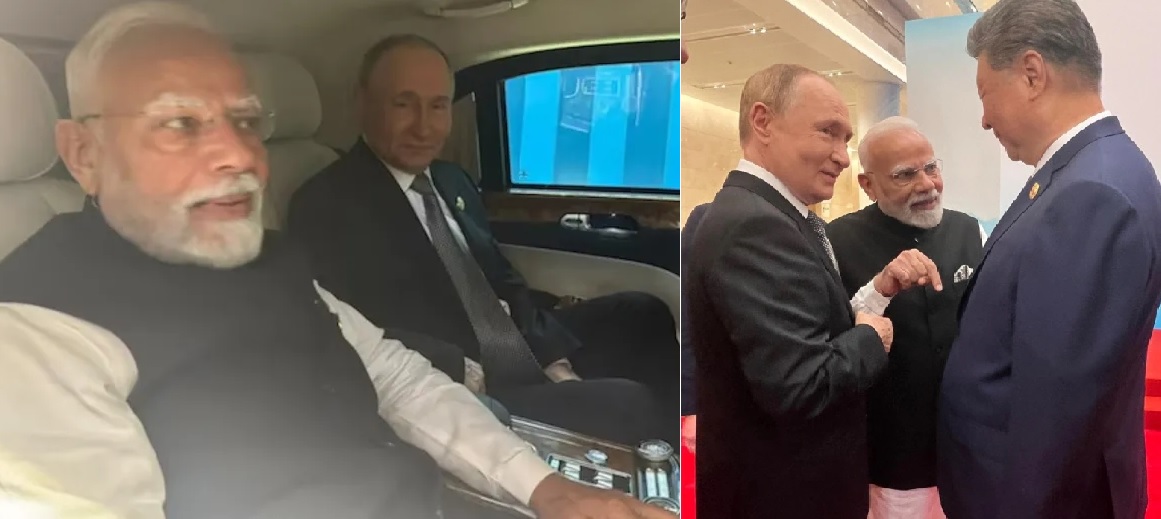 Death in Dhaka: CIA Links Surface After Putin Shielded Modi During SCO Meet
Death in Dhaka: CIA Links Surface After Putin Shielded Modi During SCO Meet
-
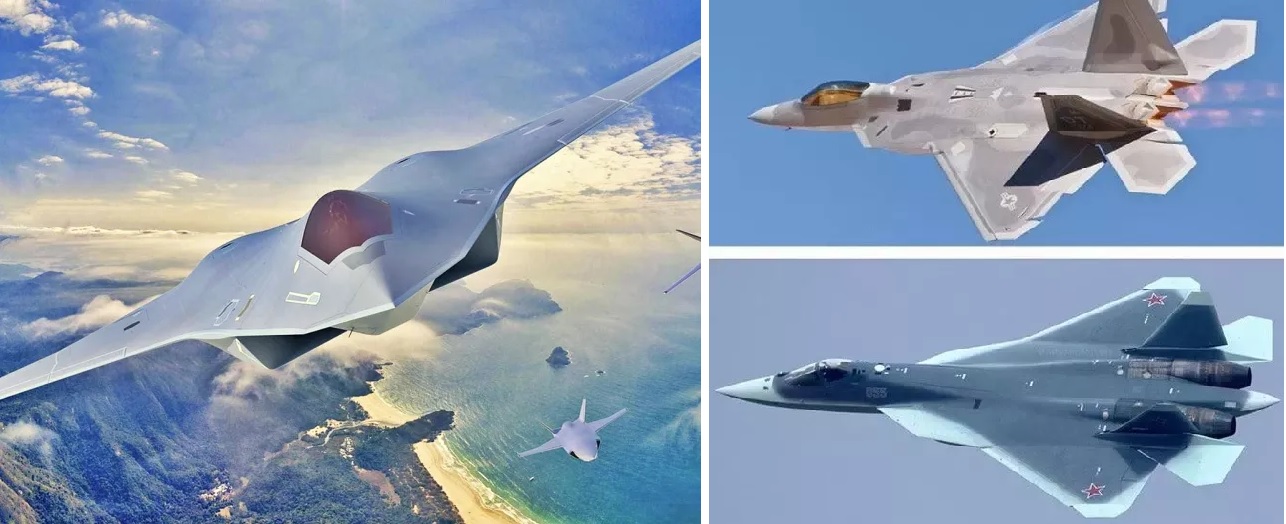 Key Differences Between 5th vs. 6th Generation Fighter Jets
Key Differences Between 5th vs. 6th Generation Fighter Jets
-
 Pakistan Air Force to Unveil Stealth-Enhanced JF-17 Block 4 Fighter Jet by 2028
Pakistan Air Force to Unveil Stealth-Enhanced JF-17 Block 4 Fighter Jet by 2028
-
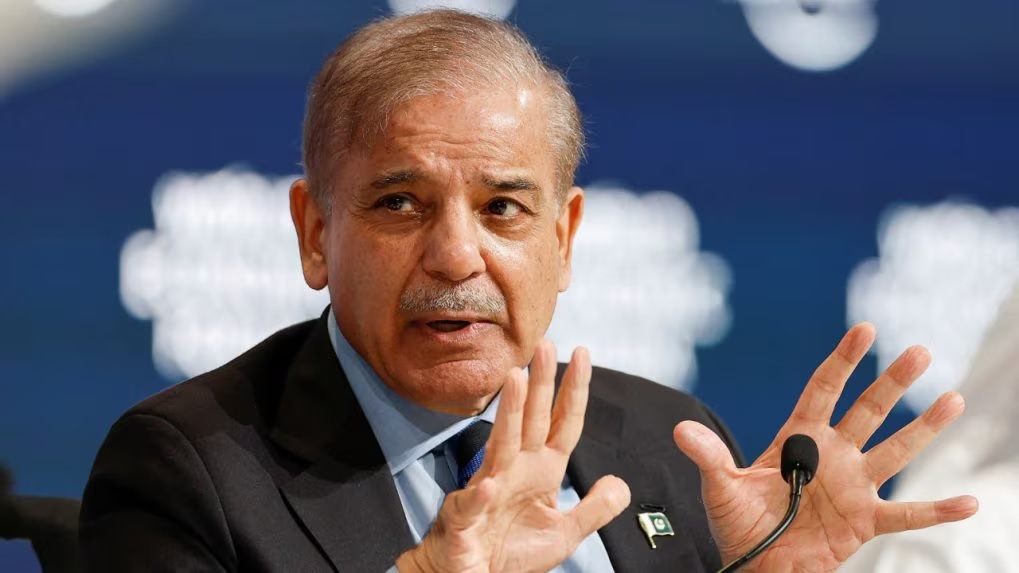 Pakistan Announces 15% Increase in Defence Budget for 2024-25 Amid Economic Crisis
Pakistan Announces 15% Increase in Defence Budget for 2024-25 Amid Economic Crisis
-
 India’s AMCA Engine Decision: Safran vs. Rolls-Royce Final Expected by 2025
India’s AMCA Engine Decision: Safran vs. Rolls-Royce Final Expected by 2025
-
 India's TEDBF Program Takes Shape First Flight by 2028: Aiming for Naval Supremacy with Advanced Stealth and Technology
India's TEDBF Program Takes Shape First Flight by 2028: Aiming for Naval Supremacy with Advanced Stealth and Technology
-
 What Would Happen if the USA Left NATO? A Comprehensive Analysis
What Would Happen if the USA Left NATO? A Comprehensive Analysis
Top Trending in 4 Days
-
 Putin Confirms Russia’s Successful Test of 9M730 Burevestnik — The “Skyfall” Nuclear-Powered Cruise Missile with Unlimited Range
Putin Confirms Russia’s Successful Test of 9M730 Burevestnik — The “Skyfall” Nuclear-Powered Cruise Missile with Unlimited Range
-
 Russia Leaked Documents Reveal True Scale of Russia’s Missile Arsenal: Billions Spent on Kalibr, Iskander, and Kinzhal Programs
Russia Leaked Documents Reveal True Scale of Russia’s Missile Arsenal: Billions Spent on Kalibr, Iskander, and Kinzhal Programs
-
 China Unveils World’s First Brain-Like Mini Supercomputer, the BIE-1
China Unveils World’s First Brain-Like Mini Supercomputer, the BIE-1
-
 Elon Musk Admits China’s Zhuque-3 Surpasses Falcon 9 in Next-Gen Rocket Technology
Elon Musk Admits China’s Zhuque-3 Surpasses Falcon 9 in Next-Gen Rocket Technology
-
 Octopus-100 Interceptor Drones Enter UK Production Under Build with Ukraine
Octopus-100 Interceptor Drones Enter UK Production Under Build with Ukraine
-
 How China Used UAE to Supercharge Its Missiles with U.S, U.K, and French Technology
How China Used UAE to Supercharge Its Missiles with U.S, U.K, and French Technology
-
 Two U.S. Navy Aircraft Go Down in South China Sea Within 30 Minutes During Chinese Military Exercises : Look Suspicious
Two U.S. Navy Aircraft Go Down in South China Sea Within 30 Minutes During Chinese Military Exercises : Look Suspicious
-
 India and Russia Set to Approve BrahMos-II Hypersonic Missile Featuring Russian Propulsion and Indian EW-Resistant Avionics
India and Russia Set to Approve BrahMos-II Hypersonic Missile Featuring Russian Propulsion and Indian EW-Resistant Avionics




